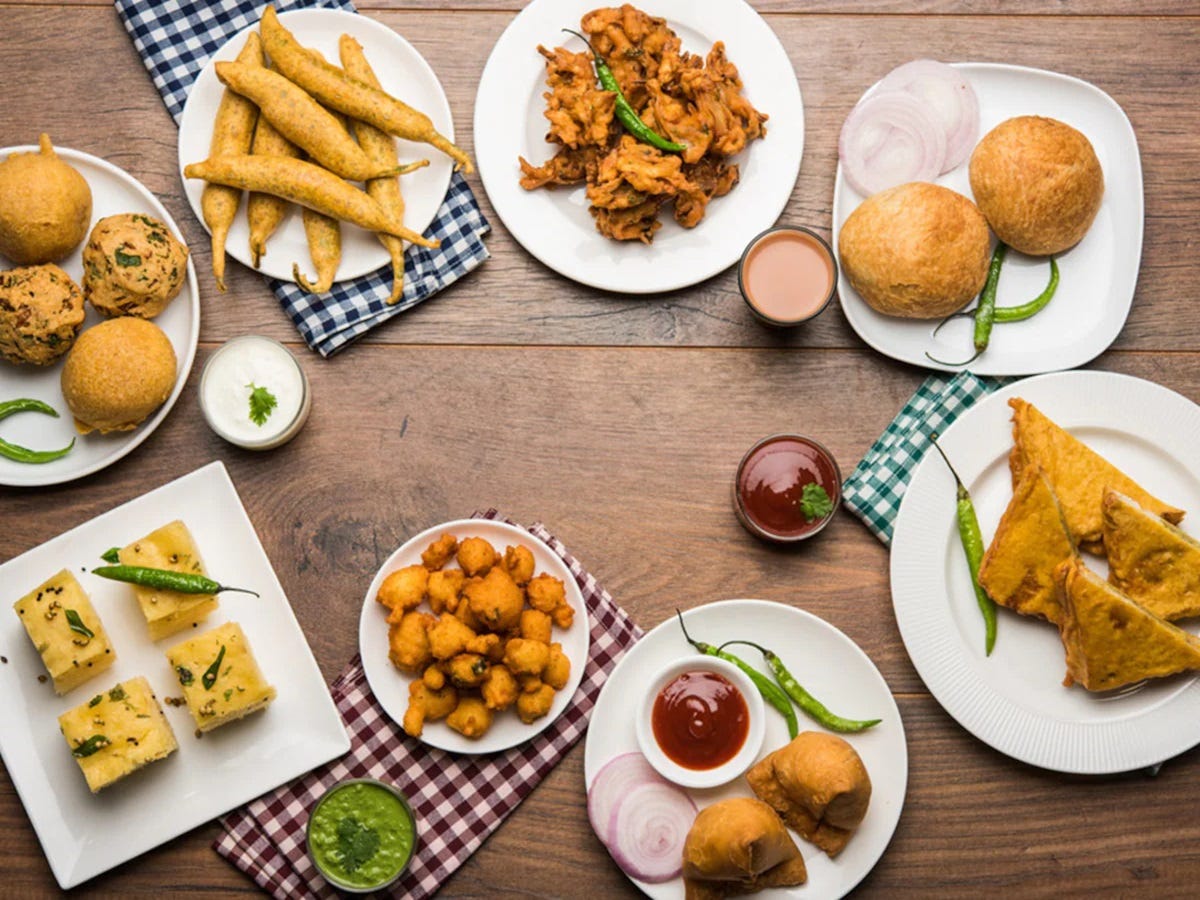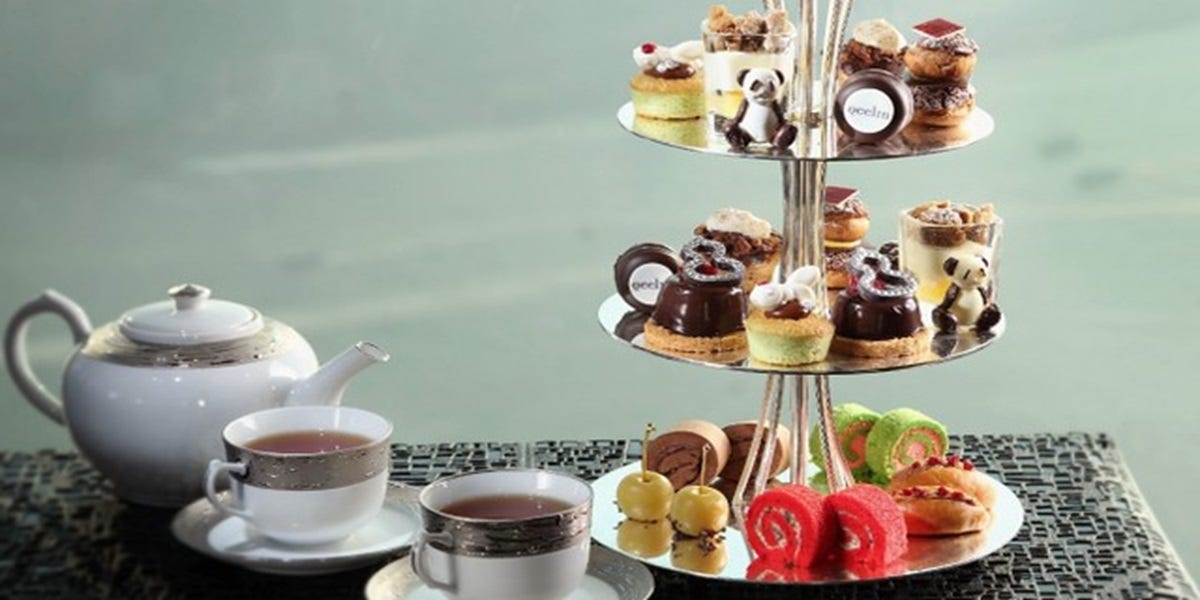British High Tea and Indian Evening Chai
How did India blend the concept of High tea into its unique traditions of evening chai?
Across households and families in India, shaam ki chai (evening tea) is not just about drinking tea; it’s a time when family members come together and unwind from the pressures of the day. Elders often sit around to discuss important matters while children munch on biscuits or savory snacks like samosas, pakoras, and kachoris.
This tradition has also found its way into many corporate settings.
Many companies have adopted the tradition of incorporating informal tea breaks or even organizing tea parties, where coworkers can relax and engage in light conversation. This simple act of sharing tea is seen as a way of encouraging teamwork and professional relationships.
This cultural tradition of shaam ki chai can be traced, in part, to the British tradition of High Tea, which was introduced to India during the colonial period. Over time, India embraced and modified this British custom, integrating it into its cultural fabric and making it distinctly Indian.
So what is High Tea and when did its tradition begin in Britain?
High Tea: A working class tradition
Before we discuss the roots of High Tea, it’s important to understand the origins of afternoon tea. Many non-British individuals often use the terms "high tea" and "afternoon tea" interchangeably, but there are notable differences between the two.
While late afternoon tea supposedly germinated in the minds of a high-class lady, the birth of the evening tea culture essentially took place within the working class in industrialized Britain.
Afternoon tea is believed to have been popularized in Britain by Anna Maria Russell, the 7th Duchess of Bedford, who served as Lady-in-Waiting to Queen Victoria. In 1840, Anna reportedly found the long interval between lunch and dinner unsettling. To satisfy her hunger, she began requesting light snacks and tea in the afternoon. This personal choice soon became a social event, when she started inviting other aristocratic ladies to join her.
This tradition became highly fashionable within the British upper classes, where afternoon tea gatherings were seen as markers of elegance and luxury. Fine china, delicate sandwiches, scones, and cakes accompanied the tea, which was often enjoyed in lavishly decorated settings.
It is important to note that while Anna’s role in 'inventing' this tradition is widely believed, there are few primary sources to support this claim. Hence, the historical narratives of her contributions remain somewhat speculative. Nonetheless, her association with the custom of afternoon tea remains popular.
While afternoon tea was an indulgence reserved for the upper classes, it was found that people from the lower rungs of society could not easily afford to organize tea parties for leisure.
Thus, a more practical version of this tradition emerged among the British working class, which came to be known as "High Tea." The term "High Tea" likely refers to the fact that it was served on a high dining table, as opposed to the low coffee tables used for afternoon tea.
The afternoon tea focused more on the tea itself. Although light savories like sandwiches, scones, and cakes were usually laid out with the tea, they were mostly used for aesthetics. In contrast, the High Tea emphasized the spread rather than the tea. It included items that were more filling to the stomach such as meat, fish, and eggs. It was only practical since it was designed for the working classes. Tea was still central to the meal, but unlike the light snacks of afternoon tea, High Tea was meant to be filling.
The working class made this meal a daily necessity, and it became an important social and familial event, much like shaam ki chai in India today.
Evening chai- A pan-Indian culture
It is the working-class practice that ultimately won over the Indian masses and became ingrained into their everyday culture. Perhaps, the tradition was initially followed in the country by British officials and merchants and, the Indians imbibed it later, especially after tea became a popular beverage from the mid-20th century onwards.
Over time, big and small commercial establishments came up, centering around this tradition of evening chai. The local tapris (tea stalls) have become cultural icons, serving piping hot tea alongside popular snacks like vada pav, bread pakoras, Maggi noodles, and the good old parle-G biscuits. These stalls typically operate in the evening and attract people from all walks of life. The atmosphere at a tapri is relaxed and informal, with tea serving as an incentive for socializing, whether in casual gossip or heated debates.
In urban centers, tea has also found its place in trendy cafés such as Chaayos and Chai Point. These modern tea chains blend Indian traditions with a contemporary twist, offering a range of teas from the classic masala chai to more experimental blends. These cafes have become popular spots for both social and professional gatherings, reflecting how tea continues to serve as a bridge between people.
One of the most remarkable aspects of shaam ki chai is its inclusivity. Whether enjoyed at a local tapri by laborers or in a posh cafe by office workers, this tradition transcends class boundaries and brings people together. It serves as a moment of respite, a pause from the demands of daily life, where the simple act of sipping tea becomes an occasion for engaging and bonding with different people.
In India, shaam ki chai is an intrinsic part of our lifestyle and socio-cultural fabric. From rich to poor, young to old, evening tea time is a shared experience that cuts across generations and communities. While it may have been inspired by British colonial traditions, India's tea culture has evolved into a distinct tradition with its unique adaptations.







Many years ago in a Delhi tearoom I discovered my love of Assam tea. I’d been travelling around India for a few months, drinking chai - which I loved but i was longing for a regular cup of tea. I’ve never forgotten how incredibly good that cup of Assam was and today it is still my favourite tea. Thanks for the interesting history of India’s tea habits. Much enjoyed!
Loved reading this!!
I’m not a chai lover😅
But that time in the evening is pure nostalgia.
Sadly, I live alone in a different city. So, we can’t cherish those blissful evenings together anymore.
This was very informative.
Thanks ♥️